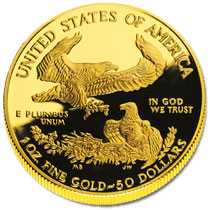



Treasurer Simcha Kuritzky reported on Club finances, which remain sound.
President and Librarian Wayne Mitchell discussed new acquisitions of the MCCC Library, including a Dictionary of Roman Coins donated by Mike Dolnick and a set of GAO reports on the US Mint, coins, currency, and commemoratives, donated by Ken Swab. Wayne also thanked Ken Swab and Jack Schadegg for their work on producing and disseminating the MCCC bulletin.
Vice President Ed Russell reminded members that he still has Red Books for sale from the Ted Bennett estate. The volumes date from 1967 through 1996, and are available at bargain prices.
Don McKee, MCCC representative to the Senior Citizens Center, reminded members that we are getting a fabulous deal from the Center --- we only pay for one hour of their time --- and since we are due to begin at 7:15pm we should be polite and not get mad at Center personnel if they are slightly late in opening up for us.
Door prize winners this month were Gil Cole, visitor Michael Bernard, and YN Andy Luck. The Gold Raffle was won by Steve Lokey.
The Bison Chip drawing named David Aaron, giving him the first "leg" toward the prize. Remember, you must be present when your name is called in order to win a Bison Chip.
The April 2003 MCCC meeting adjourned at 9:30pm, after an active auction. The auctioneer was Don McKee.

Lt. Col. Robert was raised in upstate New York, but was stationed in the Washington DC area several years ago, at the Walter Reed Army Medical Center. This piqued his interest in Dr. Reed, who was born in 1851 and died in 1902 at the rank of Major. Why did such a relatively junior officer deserve to have his name applied to a major hospital complex?
Reed was born in Gloucester County, VA, the son of a Methodist preacher. Walter was the youngest person to graduate from the University of Virginia Medical School, at the age of 18. At that time, Lt. Col. Robert explained, one could attend medical school without prior college education.
Walter Reed went to New York City, where he met the woman whom he was to marry, Emily. He then joined the Army and went West, to the Arizona Territory where he was stationed from the mid-1870s until the 1880s. He also served in the Wyoming Territory and Minnesota. He and his wife had a daughter (named Blossom) and a son.
In 1898 the Spanish American War broke out. Walter Reed volunteered to go, but was kept in Washington DC; his son enlisted and went as a private to Cuba. By 1900 it was clear that yellow fever was killing and incapacitating US troops in Cuba, and the US Army Yellow Fever Board was formed to work on the cause and cure for the epidemic. Walter Reed was chosen by the Surgeon General, George Miller Sternberg (1835-1915) to lead this Board. Reed took with him a team of physicians, Doctors James Carroll, Aristides Agramonte, and Jesse Lazear.
Walter Reed and his colleagues went to Columbia Barracks in Cuba where they commenced experiments. Lazear died of yellow fever there, and Carroll was also infected and suffered severe health problems. Reed moved his activities to a new place, christened Camp Lazear and situated outside of Havana.
At the time, there were two main theories for the method of transmission of yellow fever:
Walter Reed himself died in 1902, due to infection (peritonitis) from a burst appendix. Lt. Col. Robert discussed and displayed examples of numismatic materials issued in Reed's honor, including:
In response to questions from the audience, Lt. Col. Robert explained that Carlos J. Finlay (1833-1915) came up with the idea of mosquito transmission of yellow fever; he was honored by Cuba with a coin issued in 1988. Major General William Crawford Gorgas (1854-1920) worked to eradicate yellow fever through his anti-mosquito brigades. They emptied standing water, where larvae grew, and put kerosene films on larger bodies of water. There was no medical treatment for yellow fever until just before World War II, when quinine began to be used.
Lt. Col. Robert then discussed the case of Clara Louise Maass (1876-1901), a nurse who worked for MG Gorgas in Havana. She died of yellow fever as an experimental volunteer, and public outrage led Congress to pass a law againt further yellow fever experimentation on humans. The Franklin Mint issued a commemorative medal for Maass in 1976, and she was also honored with a commemorative stamp, pinbacks, and patches for the New Jersey "Clara Maass Medical Center".
The Walter Reed Army Medical Center, Lt. Col. Robert noted, had its first hospital established in 1909. A new, much larger hospital was built there in 1973. There have been several medals and commander's coins issued at WRAMC, and in 2002 a commemorative Christmas ornament was released from there.
For additional information on Walter Reed, including images of many documents related to the doctor, Lt. Col. Robert recommended the web site http://yellowfever.lib.virginia.edu/reed/.

(This page has been accessed 2408 times. It was last modified Monday, 28-Mar-2022 18:43:11 EDT.)
